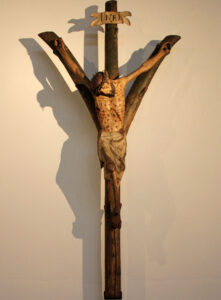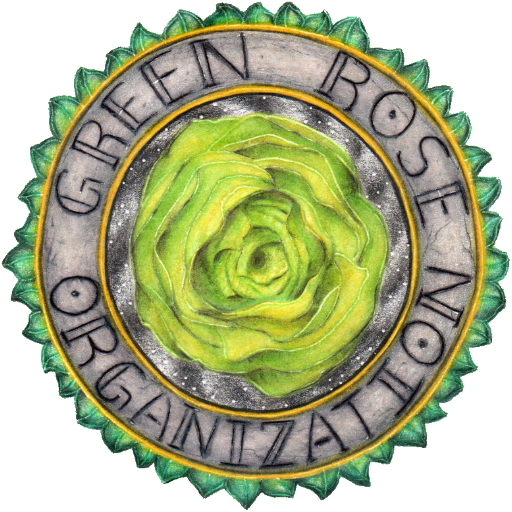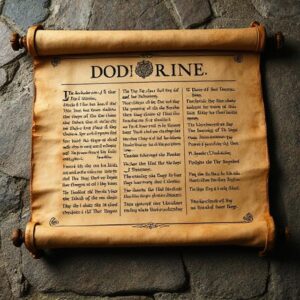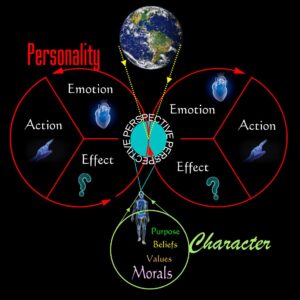Jesus' Forked Cross & 11 Beatitudes
Something to ponder while over yonder...
The exoteric understanding of Jesus' Beatitudes, as presented in the Gospel of Matthew (5:3-10), focuses on their role as moral and spiritual guidelines for living a life aligned with the values of the Kingdom of Heaven. These teachings are often seen as universal principles that emphasize humility, compassion, and righteousness.
Here’s a summary of the exoteric interpretation of the Beatitudes:
- Blessed are the poor in spirit – Recognizing one’s spiritual need and dependence on God.
- Blessed are those who mourn – Finding comfort in God during times of sorrow.
- Blessed are the meek – Practicing humility and gentleness, inheriting the earth through peace.
- Blessed are those who hunger and thirst for righteousness – Seeking justice and moral integrity.
- Blessed are the merciful – Showing compassion and forgiveness to others.
- Blessed are the pure in heart – Living with sincerity and integrity, leading to a vision of God.
- Blessed are the peacemakers – Promoting harmony and reconciliation, becoming children of God.
- Blessed are those persecuted for righteousness’ sake – Enduring trials for the sake of faith, with the promise of heavenly reward.
In this context, the Beatitudes are often understood as practical virtues that guide Christians toward a blessed life, both in this world and in the afterlife. They are seen as a blueprint for Christian living, emphasizing qualities that reflect God’s love and justice.
Mystical Christianity often interprets the Beatitudes as spiritual initiations—steps toward divine union and ego transcendence. While the traditional Beatitudes from Matthew 5:3-10 remain foundational, esoteric traditions expand their meanings, linking them to inner transformation, the Tree of Life, and higher states of consciousness.
Here’s a mystical interpretation of the Beatitudes:
- Blessed are the poor in spirit – Represents humility and surrender, the first step toward dissolving the ego.
- Blessed are those who mourn – Acknowledging suffering as a gateway to compassion and deeper wisdom.
- Blessed are the meek – Cultivating receptivity and non-attachment, aligning with divine will.
- Blessed are those who hunger and thirst for righteousness – The yearning for truth and spiritual nourishment.
- Blessed are the merciful – Embodying divine grace and unconditional love.
- Blessed are the pure in heart – Achieving clarity of perception, seeing beyond illusion.
- Blessed are the peacemakers – Becoming a bridge between realms, harmonizing opposites.
- Blessed are those persecuted for righteousness’ sake – The final test of spiritual endurance, transcending worldly trials.
Some mystical traditions, such as Kabbalah and Rosicrucian thought, align these Beatitudes with the Sephirot of the Tree of Life, seeing them as stages of enlightenment. Others, like Gnostic Christianity, view them as keys to unlocking divine gnosis.
Mystical Christianity often expands on the traditional eight Beatitudes found in the Gospel of Matthew, interpreting them as spiritual initiations or keys to divine union. Some esoteric traditions, such as Franciscan mysticism, Gnostic Christianity, and Kabbalistic thought, view the Beatitudes as progressive stages of enlightenment, sometimes adding additional principles that align with deeper mystical teachings.
For example, some mystical interpretations include:
- Blessed are those who seek wisdom, for they shall uncover divine mysteries.
- Blessed are those who embrace silence, for they shall hear the voice of God.
- Blessed are those who surrender the self, for they shall be one with the eternal.
These expanded Beatitudes reflect inner transformation, moving beyond moral guidance into states of consciousness that align with ego dissolution and divine unity. Some traditions even link them to the Tree of Life, chakras, or stages of mystical ascent.
The forked cross, also known as the Y-cross or crucifixus dolorosus, carries deep symbolic meaning in mystical Christianity. Emerging in the 13th and 14th centuries, it was heavily influenced by Christian mysticism, particularly in the German Rhineland.

Symbolic Meanings in Esoteric Christianity
- Tree of Knowledge & Redemption – The forked shape is often linked to the Tree of Knowledge, which introduced sin into the world. Christ’s suffering on the cross is seen as the redemption of humanity, reversing the effects of the Fall.
- The Holy Trinity – Some interpretations see the three arms of the cross as representing the Father, Son, and Holy Spirit, emphasizing divine unity.
- Mystical Suffering & Ego Dissolution – The exaggerated depiction of Christ’s suffering on the forked cross was meant to evoke fear and awe, reinforcing the mystical idea of ego dissolution through suffering.
- Life’s Journey & Spiritual Choice – The forked shape resembles the Greek letter upsilon (Υ), which Pythagoras used to symbolize the crossroads of life—choosing between virtue and vice.
- The Cross of the Thieves – Some depictions show Christ on a straight cross, while the two thieves crucified alongside him are on forked crosses, reinforcing its association with sin and redemption.
This cross was particularly revered by Franciscan and Dominican mystics, who emphasized Christ’s Passion as a path to divine union.
Exploring esoteric Christianity and the mystical teachings of Jesus the Christ can be a profound journey. Here’s a structured approach to guide you from the earliest recorded teachings to more contemporary interpretations:
1. Start with Early Christian Mysticism
- Gnostic Texts: Dive into the Nag Hammadi Library, which includes works like the Gospel of Thomas and the Gospel of Philip. These texts emphasize inner knowledge and spiritual awakening.
- Early Church Fathers: Study writings by mystically inclined figures like Origen and Clement of Alexandria, who explored allegorical interpretations of scripture.
2. Explore Medieval Mysticism
- Christian Kabbalah: Investigate how mystical Judaism influenced Christian thought, particularly through figures like Johann Reuchlin.
- Mystical Orders: Learn about the Franciscans, Dominicans, and Beguines, who emphasized Christ’s Passion and divine union.
- The Forked Cross: Symbolic artifacts like this can deepen your understanding of mystical suffering and redemption.
3. Renaissance Esotericism
- Rosicrucian Teachings: Study how Renaissance mystics integrated alchemy, astrology, and Hermeticism into Christian spirituality.
- Jacob Boehme: His writings on divine wisdom and the mystical nature of Christ are foundational.
4. Modern Esoteric Christianity
- Theosophy: Explore teachings by Helena Blavatsky and others who synthesized Christian mysticism with Eastern philosophies.
- Contemporary Mystics: Investigate modern interpretations, such as those found in Esoteric Advent or Spiritual Meaning Academy.
5. Practical Steps
- Meditative Practices: Engage in contemplative prayer or meditation to experience the mystical dimensions of Christ’s teachings.
- Symbolic Study: Analyze metaphors like the Tree of Life and the green rose, which resonate with esoteric themes.
- Comparative Exploration: Connect Christian mysticism with other traditions, such as Sufism or Taoism, to uncover universal truths.




